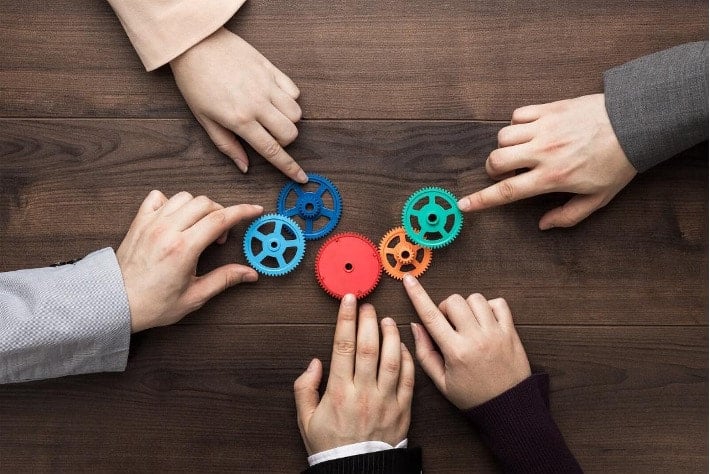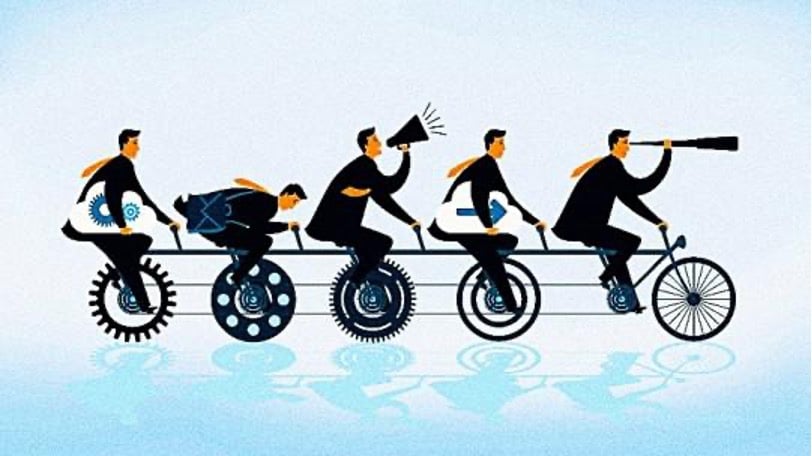A significant portion of all sports played in society are team sports. In reality, kids and teenagers frequently overlook other, more solitary activities like athletics, swimming, tennis, or any contact sport in favour of team sports like soccer, basketball, volleyball, or handball. Children, however, are unable to comprehend that being a part of a team includes both advantages and disadvantages. as fact, because of the impact it can have on performance, the topic of working as a team has been studied for decades.
Kurt Lewin, the father of social psychology and a leading expert in group psychology, was one of the best researchers in this area. The understanding of how group cohesion might improve athletes' performance served as the foundation for some of Kurt Lewin's studies. It's true that a theory called "Dynamic Effort Method" aims to boost a group's performance. Given that a sports team can profit from this approach, in today's post we'll concentrate on defining the dynamic effort method and outlining the factors that can help a team perform better when it's used.
In order to achieve this, we will analyse the relevant literature, extract the salient features of its application, and offer suggestions for how it might be used in a sports team. We must emphasise before we continue that this strategy needs a licenced psychologist to properly analyse the group's development. Sports psychologists and other specialised psychologists are common in high-stakes competition, but they are less common in amateur or school sports, therefore be mindful that this page is solely based on suggestions.
Group Cohesiveness as The Dynamic Effort Method’s Key

The effectiveness of teams is strongly correlated with factors that affect group cohesion, according to recent research (1). This fact demonstrates how group interventions improve performance and productivity in groups. Additionally, psychologically oriented tools have been created over time to evaluate how coaches and athletes perceive the cohesiveness of the team. These instruments are essential for determining team success, comprehending it, and creating successful interventions to enhance sporting performance.
Using the dynamic effort method, teams can perform better in any kind of activity. This approach is predicated on the notion that every team member must cooperate in order to overcome challenges and accomplish objectives in order to be successful. In fact, a systematic review including meta-analysis looked into the connection between sports performance and team cohesion. According to the study's findings, there is a direct and significant link between team cohesion and performance, meaning that teams with stronger cohesion outperform teams with lower cohesion. The authors do stress that there are more elements that can affect team performance.

The authors also discovered that the link is stronger in invasive team sports (like soccer) than in non-invasive team sports (like volleyball), which is an intriguing finding. These findings enable us to identify the team sports where improving group cohesion is most crucial and direct practitioners towards various tactics. When we wish to increase cohesion, we should promote the following traits:
Boost communication and cooperation.
Encourage open dialogue and constructive criticism because these factors have been linked favourably to team cohesion among young basketball players (2).
Teach interpersonal abilities including cooperation and dispute resolution.
Set collective objectives and place more emphasis on group accomplishment than individual achievement.
What Should be Done to Apply the Dynamic Effort Method?
I'd like to start by reminding you that the dynamic effort technique is a psychological theory that explains how having other people around might improve how well a task is completed. However, we shouldn't just focus on how important it is for this relationship within the group to succeed; there are other factors to consider, like how difficult the task is or who our competition will be. But here's the big question: How do we actually use this approach? We can do the following:
Identify Common Goals
The first step in using the dynamic effort method is to provide everyone in the group a set of shared goals. The goals must be realistic and must point the group's members in the same direction, as we have always stressed. The coach is in charge of the goals, but from this point on, we advise you to genuinely ask, "What goal do you think we have as a team?" This promotes group engagement from all individuals. A voice for every member is necessary to ensure that nobody is left out. Avoiding conflicts and cliques is a good idea.
Set Roles
There is no finer feeling than being a part of a group when each person knows their exact job and feels at ease in it. Every team member needs to be aware of their duties and roles. Each individual must feel appreciated and understand how crucial their contribution is to the success of the team. These positions may be in the realm of athletics or inside the team's social atmosphere. This leads to the following point.

Encourage Collaboration & Social Relations in the Group
We are aware that teamwork is required for the completion of all jobs. This is uncommon, though. It is challenging for everyone to be "friends" because there are better and worse social interactions within each group. But it is our responsibility as coaches to make sure this occurs. A more effective implementation of the dynamic technique can be achieved by encouraging interactions amongst individuals who are not very close. Let's utilise a simple, understandable illustration.
When a new football player joins a squad, he often participates in all team activities with players of his own nationality and occasionally feels "separated" from the group. Gareth Bale is a well-known example of someone who struggled to fit in with the group since he didn't speak the language and only interacted with those who did. with truth, his performance with the Spanish team has not been great, and this could be one of the causes. Team members must communicate with one another and share knowledge. The success of the team depends on effective communication.
What Are the Benefits of The Dynamic Effort Method?

Although we have seen the qualities that any application of the dynamic effort method must have, we do not yet fully understand its capabilities. We must first make it clear that this method's performance is unrelated. As a result, it can be administered and performance will remain the same. Long-term, nevertheless, it is a means to integrate into your group. In truth, Pep Guardiola is one of the managers who, whether he intended to or not, made good use of the dynamic effort method. Teams who use the dynamic effort method may have several advantages. Among all the potential advantages, we wanted to call attention to the following:
Enhances Motivation & Has Impact on Performance
If we can successfully use this strategy, we will be able to increase the athletes' motivation. Each athlete must believe they are a part of the process in order to achieve this. A team of athletes may not be more motivated or perform better if they, for instance, underestimate the impact of this technique. On the other hand, if the team captains understand the value of a strong application, it will encourage the cooperation of the other players. If used properly, there is sufficient proof to establish that this strategy boosts performance, therefore trust it and use it with your athletes!
Identifies Areas of Improvement and Strengthens Interpersonal Relationships
The team may identify areas for improvement by using this strategy, which is another benefit. We can discover areas for improvement and take action to fix them by periodically analysing the team's progress. Additionally, we can encourage our group's strengths by recognising them. For instance, if we analyse our squad and find that player interaction off the pitch needs to be enhanced but that interpersonal interaction on the pitch during practise and during games is excellent, we should work to enhance the former and support the latter. The dynamic effort technique can improve interpersonal interactions within the team by promoting cooperation and teamwork.
Who Can Use This Method?
Teams of athletes are subjected to the dynamic effort method. However, a variety of groups can use this technique. Today, we'll provide you some instances of other situations in which this methodology can be used. Let's begin with the athletic team. For instance, a handball team can specify its goals, assign duties to each player, promote cooperation and communication among team members, and assess its success on a regular basis.
The dynamic effort approach can be used by an educational team, such as the faculty of teachers or a work group, to enhance productivity and professional growth. Additionally, this approach can help research teams who are preparing for a mathematical competition.
And lastly, any kind of workplace team. That is, there are directors, assistant directors, specialists, managers, and technicians in each department inside a business. To make the work as professional as they can, they must all work together. The dynamic effort method, for instance, can be used in a mechanical workshop or by a sales team.
Conclusion
An efficient strategy for raising team performance in any kind of activity is the dynamic effort method. Teams may develop cooperation, motivation, and active participation of each member by using the steps we've outlined in this helpful piece, which can greatly enhance performance. The use of the dynamic effort method can also improve teammate connections and foster an environment that is productive and positive at work.
It's crucial to keep in mind that the dynamic effort approach demands time and effort for its proper use, as well as for its ongoing improvement and periodic review. Though valuable, the successful outcomes that can be attained can leave a long-lasting impression on the team and the members of it.
In conclusion, using the dynamic effort strategy can help teams perform better and accomplish their goals. Teams may improve their teamwork, communication, and motivation by adopting the techniques we've outlined in this helpful post and the advice of subject-matter experts, and they can produce excellent outcomes in any activity they engage in.




No comments:
Post a Comment